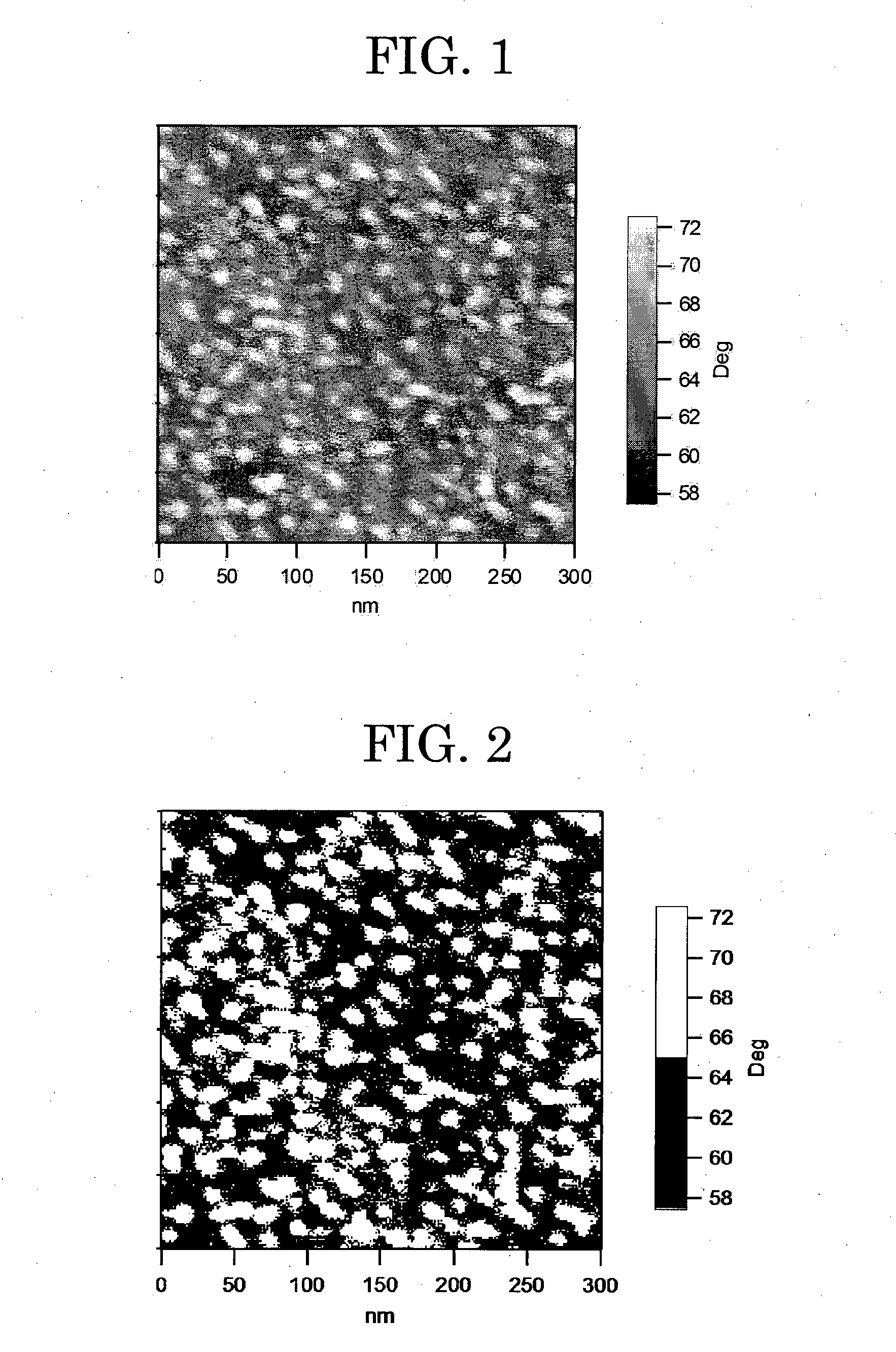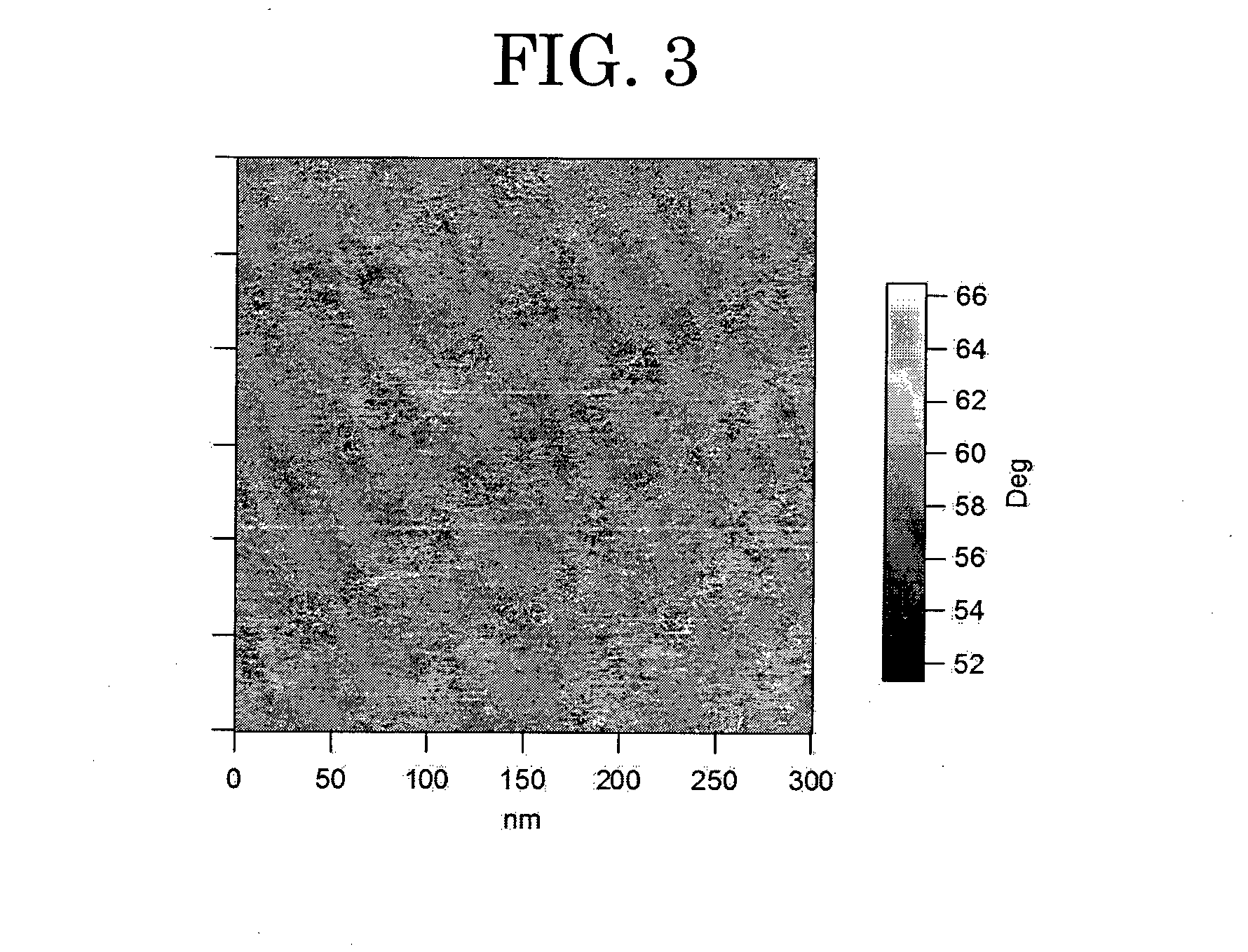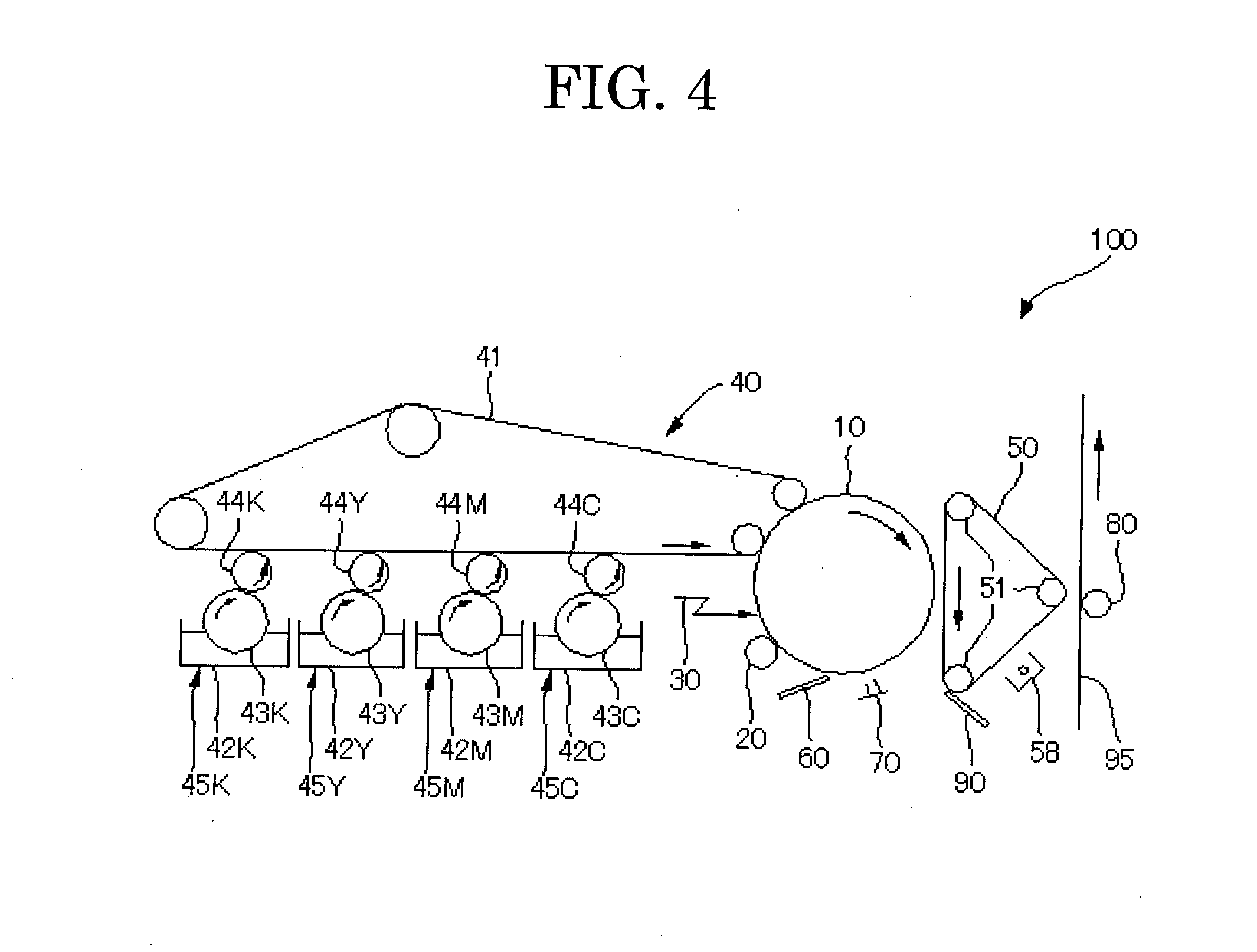Toner, developer, image forming apparatus, and image forming method
a technology of image forming apparatus and developer, which is applied in the direction of electrographic process apparatus, instruments, electrographic process, etc., can solve the problems of easy surface damage of photoconductor, deformation of toner, melting of toner, etc., to prevent transfer voids, excellent friction resistance, and low temperature fixability and heat resistance storage stability
- Summary
- Abstract
- Description
- Claims
- Application Information
AI Technical Summary
Benefits of technology
Problems solved by technology
Method used
Image
Examples
manufacture example 1-1
Manufacture of Non-Crystalline Segment A1
[0379]A 5 L four-neck flask equipped with a nitrogen introducing pipe, a dehydrating pipe, a stirrer, and a thermocouple was charged with propylene glycol as diol and dimethyl terephthalate and dimethyl adipate as dicarboxylic acids, such that the molar ratio between dimethyl terephthalate and dimethyl adipate (dimethyl terephthalate / dimethyl adipate) would be 90 / 10 and the ratio between OH group and COOH group (OH / COOH) would be 1.2. The flask was further charged with titanium tetraisopropoxide in an amount of 300 ppm relative to the mass of the materials charged, and the materials were reacted while making methanol flow out. The materials were reacted until the temperature was finally elevated to 230° C. and the acid value of the resin became 5 mgKOH / g or less. After this, the materials were reacted for 4 hours under a reduced pressure of from 20 mmHg to 30 mmHg, to thereby obtain [Non-Crystalline Segment A1], which was a line-shaped non-cr...
manufacture example 1-2
Manufacture of Non-Crystalline Segment A2
[0381]A 5 L four-neck flask equipped with a nitrogen introducing pipe, a dehydrating pipe, a stirrer, and a thermocouple was charged with propylene glycol as diol and dimethyl terephthalate and dimethyl fumarate as dicarboxylic acids, such that the molar ratio between dimethyl terephthalate and dimethyl fumarate (dimethyl terephthalate / dimethyl fumarate) would be 83 / 17 and the ratio between OH group and COOH group (OH / COOH) would be 1.3. The flask was further charged with titanium tetraisopropoxide in an amount of 300 ppm relative to the mass of the materials charged, and the materials were reacted while making methanol flow out. The materials were reacted until the temperature was finally elevated to 230° C. and the acid value of the resin became 5 mgKOH / g or less. After this, the materials were reacted for 4 hours under a reduced pressure of from 20 mmHg to 30 mmHg, to thereby obtain [Non-Crystalline Segment A2], which was a line-shaped non...
manufacture example 1-3
Manufacture of Non-Crystalline Segment A3
[0383]A 5 L four-neck flask equipped with a nitrogen introducing pipe, a dehydrating pipe, a stirrer, and a thermocouple was charged with propylene glycol as diol and dimethyl terephthalate as dicarboxylic acid, such that the ratio between OH group and COOH group (OH / COOH) would be 1.2. The flask was further charged with titanium tetraisopropoxide in an amount of 300 ppm relative to the mass of the materials charged, and the materials were reacted while making methanol flow out. The materials were reacted until the temperature was finally elevated to 230° C. and the acid value of the resin became 5 mgKOH / g or less. After this, the materials were reacted for 4 hours under a reduced pressure of from 20 mmHg to 30 mmHg, to thereby obtain [Non-Crystalline Segment A3], which was a line-shaped non-crystalline polyester resin.
[0384]The obtained resin had an acid value (AV) of 0.37 mgKOH / g, a hydroxyl value (OHV) of 25.3 mgKOH / g, and a glass transiti...
PUM
| Property | Measurement | Unit |
|---|---|---|
| spin-spin relaxation time | aaaaa | aaaaa |
| spin-spin relaxation time | aaaaa | aaaaa |
| spin-spin relaxation time | aaaaa | aaaaa |
Abstract
Description
Claims
Application Information
 Login to View More
Login to View More - R&D
- Intellectual Property
- Life Sciences
- Materials
- Tech Scout
- Unparalleled Data Quality
- Higher Quality Content
- 60% Fewer Hallucinations
Browse by: Latest US Patents, China's latest patents, Technical Efficacy Thesaurus, Application Domain, Technology Topic, Popular Technical Reports.
© 2025 PatSnap. All rights reserved.Legal|Privacy policy|Modern Slavery Act Transparency Statement|Sitemap|About US| Contact US: help@patsnap.com



